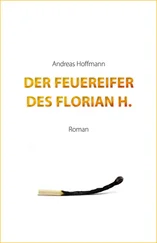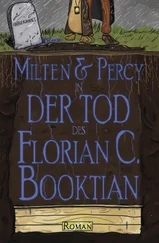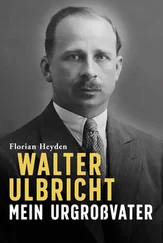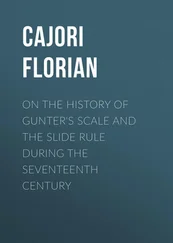Florian Cajori - William Oughtred
Здесь есть возможность читать онлайн «Florian Cajori - William Oughtred» — ознакомительный отрывок электронной книги совершенно бесплатно, а после прочтения отрывка купить полную версию. В некоторых случаях можно слушать аудио, скачать через торрент в формате fb2 и присутствует краткое содержание. Жанр: foreign_antique, foreign_prose, на английском языке. Описание произведения, (предисловие) а так же отзывы посетителей доступны на портале библиотеки ЛибКат.
- Название:William Oughtred
- Автор:
- Жанр:
- Год:неизвестен
- ISBN:нет данных
- Рейтинг книги:4 / 5. Голосов: 1
-
Избранное:Добавить в избранное
- Отзывы:
-
Ваша оценка:
- 80
- 1
- 2
- 3
- 4
- 5
William Oughtred: краткое содержание, описание и аннотация
Предлагаем к чтению аннотацию, описание, краткое содержание или предисловие (зависит от того, что написал сам автор книги «William Oughtred»). Если вы не нашли необходимую информацию о книге — напишите в комментариях, мы постараемся отыскать её.
William Oughtred — читать онлайн ознакомительный отрывок
Ниже представлен текст книги, разбитый по страницам. Система сохранения места последней прочитанной страницы, позволяет с удобством читать онлайн бесплатно книгу «William Oughtred», без необходимости каждый раз заново искать на чём Вы остановились. Поставьте закладку, и сможете в любой момент перейти на страницу, на которой закончили чтение.
Интервал:
Закладка:
ALLEGED TRAVEL ABROAD
According to certain sources of information, Oughtred traveled on the European Continent and was invited to change his abode to the Continent. We have seen no statement from Oughtred himself on this matter. He seldom referred to himself in his books and letters. The autobiography contained in his Apologeticall Epistle was written a quarter of a century before his death. Aubrey gives the following:
In the time of the civill warres the duke of Florence invited him over, and offered him 500 li. per annum; but he would not accept it, because of his religion. 18 18 Op. cit. , Vol. II, p. 110.
A portrait of Oughtred, painted in 1646 by Hollar and inserted in the English edition of the Clavis of 1647, contains underneath the following lines:
“Haec est Oughtredi senio labantis imago
Itala quam cupiit, Terra Britanna tulit.”
In the sketch of Oughtred by Owen Manning it is confessed that “it is not known to what this alludes; but possibly he might have been in Italy with his patron, the Earl of Arundel.” 19 19 Rev. Owen Manning, The History and Antiquities of Surrey , Vol. II, London, 1809, p. 132.
It would seem quite certain either that Oughtred traveled in Europe or that he received some sort of an offer to settle in Italy. In view of Aubrey’s explicit statement and of Oughtred’s well-known habit of confining himself to his duties and studies in his own parish, seldom going even as far as London, we strongly incline to the opinion that he did not travel on the Continent, but that he received an offer from some patron of the sciences – possibly some distinguished visitor – to settle in Italy.
HIS DEATH
He died at Albury, June 30, 1660, aged about eighty-six years. Of his last days and death, Aubrey speaks as follows:
Before he dyed he burned a world of papers, and sayd that the world was not worthy of them; he was so superb. He burned also severall printed bookes, and would not stirre, till they were consumed… I myselfe have his Pitiscus, imbelished with his excellent marginall notes, which I esteeme as a great rarity. I wish I could also have got his Bilingsley’s Euclid, which John Collins sayes was full of his annotations…
Ralph Greatrex, his great friend, the mathematicall instrument-maker, sayed he conceived he dyed with joy for the comeing-in of the king, which was the 29th of May before. “And are yee sure he is restored?” – “Then give me a glasse of sack to drinke his sacred majestie’s health.” His spirits were then quite upon the wing to fly away… 20 20 Op. cit. , Vol. II, 1898, p. 111.
In this passage, as in others, due allowance must be made for Aubrey’s lack of discrimination. He was not in the habit of sifting facts from mere gossip. That Oughtred should have declared that the world was not worthy of his papers or manuscripts is not in consonance with the sweetness of disposition ordinarily attributed to him. More probable was the feeling that the papers he burned – possibly old sermons – were of no particular value to the world. That he did not destroy a large mass of mathematical manuscripts is evident from the fact that a considerable number of them came after his death into the hands of Sir Charles Scarborough, M.D., under whose supervision some of them were carefully revised and published at Oxford in 1677 under the title of Opuscula mathematica hactenus inedita .
Aubrey’s story of Oughtred’s mode of death has been as widely circulated in every modern biographical sketch as has his slander of Mrs. Oughtred by claiming that she was so penurious that she would deny him the use of candles to read by. Oughtred died on June 30; the Restoration occurred on May 29. No doubt Oughtred rejoiced over the Restoration, but the story of his drinking “a glass of sack” to his Majesty’s health, and then dying of joy is surely apocryphal. De Morgan humorously remarks, “It should be added, by way of excuse, that he was eighty-six years old.” 21 21 Budget of Paradoxes , London, 1872, p. 451; 2d ed., Chicago and London, 1915, Vol. II, p. 303.
CHAPTER II
PRINCIPAL WORKS
“CLAVIS MATHEMATICAE”
Passing to the consideration of Oughtred’s mathematical books, we begin with the observation that he showed a marked disinclination to give his writings to the press. His first paper on sun-dials was written at the age of twenty-three, but we are not aware that more than one brief mathematical manuscript was printed before his fifty-seventh year. In every instance, publication in printed form seems to have been due to pressure exerted by one or more of his patrons, pupils, or friends. Some of his manuscripts were lent out to his pupils, who prepared copies for their own use. In some instances they urged upon him the desirability of publication and assisted in preparing copy for the printer. The earliest and best-known book of Oughtred was his Clavis mathematicae , to which repeated allusion has already been made. As he himself informs us, he was employed by the Earl of Arundel about 1628 to instruct the Earl’s son, Lord William Howard (afterward Viscount Stafford) in the mathematics. For the use of this young man Oughtred composed a treatise on algebra which was published in Latin in the year 1631 at the urgent request of a kinsman of the young man, Charles Cavendish, a patron of learning.
The Clavis mathematicae , 22in its first edition of 1631, was a booklet of only 88 small pages. Yet it contained in very condensed form the essentials of arithmetic and algebra as known at that time.
Aside from the addition of four tracts, the 1631 edition underwent some changes in the editions of 1647 and 1648, which two are much alike. The twenty chapters of 1631 are reduced to nineteen in 1647 and in all the later editions. Numerous minute alterations from the 1631 edition occur in all parts of the books of 1647 and 1648. The material of the last three chapters of the 1631 edition is rearranged, with some slight additions here and there. The 1648 edition has no preface. In the print of 1652 there are only slight alterations from the 1648 edition; after that the book underwent hardly any changes, except for the number of tracts appended, and brief explanatory notes added at the close of the chapters in the English editions of 1694 and 1702. The 1652 and 1667 editions were seen through the press by John Wallis; the 1698 impression contains on the title-page the words: Ex Recognitione D. Johannis Wallis, S.T.D. Geometriae Professoris Saviliani .
The cost of publishing may be a matter of some interest. When arranging for the printing of the 1667 edition of the Clavis , Wallis wrote Collins: “I told you in my last what price she [Mrs. Lichfield] expects for it, as I have formerly understood from her, viz., £ 40 for the impression, which is about 9½ d. a book.” 23
As compared with other contemporary works on algebra, Oughtred’s distinguishes itself for the amount of symbolism used, particularly in the treatment of geometric problems. Extraordinary emphasis was placed upon what he called in the Clavis the “analytical art.” 24By that term he did not mean our modern analysis or analytical geometry, but the art “in which by taking the thing sought as knowne, we finde out that we seeke.” 25He meant to express by it condensed processes of rigid, logical deduction expressed by appropriate symbols, as contrasted with mere description or elucidation by passages fraught with verbosity. In the preface to the first edition (1631) he says:
In this little book I make known.. the rules relating to fundamentals, collected together, just like a bundle, and adapted to the explanation of as many problems as possible.
Читать дальшеИнтервал:
Закладка:
Похожие книги на «William Oughtred»
Представляем Вашему вниманию похожие книги на «William Oughtred» списком для выбора. Мы отобрали схожую по названию и смыслу литературу в надежде предоставить читателям больше вариантов отыскать новые, интересные, ещё непрочитанные произведения.
Обсуждение, отзывы о книге «William Oughtred» и просто собственные мнения читателей. Оставьте ваши комментарии, напишите, что Вы думаете о произведении, его смысле или главных героях. Укажите что конкретно понравилось, а что нет, и почему Вы так считаете.












